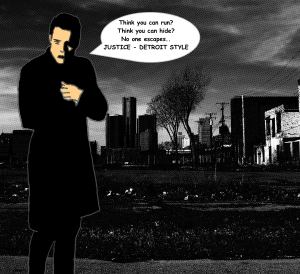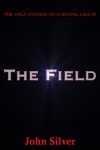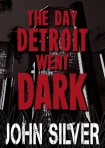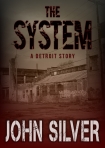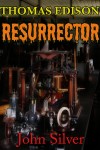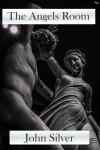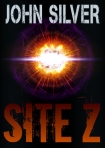The Reef Movie Review
One Line Synopsis
A Great White Shark preys on a shipwrecked crew trying to swim to Turtle Island in the Australian Great Barrier Reef. One dude sticks with the capsized boat.
We were scanning the movie channels last night and stopped on The Reef. The Reef, purportedly a true story, is an Australian film released in 2010 centered around a crew of four comprising two men, two women, most of them inexperienced sailors. The keel of their sailboat is ripped away on a coral reef (some high-quality boat driving there) and the boat capsizes, leaving them stranded. They can stay atop the capsized hull and drift into the open ocean or swim north around twelve miles to Turtle Island, which they passed hours earlier.
This is one of the classic screenplay paradigms- the “what would you do” scenario. Most of the crew members are admittedly weak swimmers and voice their concerns they may not make it to an island they can’t even see. How do they know they won’t just swim around in circles even though the skipper, Luke, knows how to determine direction from the dials on his Rolex watch? Also, throw the threat of sharks in the mix amplifying the dilemma.
Three of the crew decide to swim for it and they’re attacked by a Great White shark. So do any of them make it to the island? Watch the movie and see.
The Reef is a low budget film but effective and suspenseful. What impressed me was the ferocity, suddenness and violence of the shark attacks. No real gore, such as severed legs being followed by a camera to the ocean floor, just fatal attacks in the blink of an eye followed by stillness. Then comes the final kill, then calm and silence. The film portrays the magnitude and raw indifference of the most powerful predator on the planet. The attack scenes must be what it’s like to experience a shark attack and it was as compelling as it was disturbing. The dude who stayed with the boat was never found (neither was the boat), by the way.
Of the low-budget shark attack movies, The Reef stands out above the others. The Aussies know have a knack for making effective low-budget films.
Director
Andrew Traucki
Screenplay
Andrew Traucki
Standout Actors
Damian Walshe-Howling as Luke
Best Bit Part
The Great White Shark – didn’t see all that much of him but intimidating and effective.
Grade
Solid B
My CreateSpace Experience Part 3
If you’ve read the first two installments, then you know we’re ready to move on to preparing your manuscript for upload to CreateSpace. The next step is to format your book using a Word template, converting it to a PDF file, uploading, correcting formatting errors and proofing your manuscript.
The first thing you need to do is choose the size of your book. CreateSpace offers several sizes and defaults to 6×9 inches. You should make this decision carefully. I chose a 5×8 book size. Why? For several reasons. I planned on pricing my books as low as reasonably possible and the smaller the book size, the lower the production cost. The same with your choice of paper and ink. I use white paper with black ink, plain and simple.
Another reason 5×8 is a good choice is that the physical book is highly portable. A few 5×8 books take up a lot less space in a backpack or carry on piece of luggage than a 6×9 or larger versions. Also, due to the smaller page size, the book will be thicker than a 6×9 version. With eBooks, readers seem to prefer shorter books and accumulate a lot of them on their eBook readers, but it’s just the opposite with paperbacks. Who would pay eight to fourteen dollars for a 150 page paperback? Not me or anybody else I know. When people spend money for a physical book, they like it to have some heft, and a 5×8 300 page book feels like they’ve gotten their money’s worth. And they have, if the price is low. My books are thrillers designed to be read in a few hours and are usually a little under 300 pages long. This formula and book size works pretty well for me, and it might for you, too.
Once you’ve decided on the size of your book, CreateSpace provides a Word template for your book size, which you download for free. CreateSpace recommends using the template and so do I, with a couple of caveats. I use Scrivener to write all my novels since it’s a great tool for large documents and contains eBook compilers- .mobi for Kindles and epub for Nook and other readers. This got in the way of using the template as-is.
I downloaded the 5×8 template and started porting my Scrivener based manuscript for The System – A Detroit Story. Here’s where my ignorance came into play, big time. I spent hours copying and pasting the text from Scrivener to the template, messing up the template’s preset margins in the process. So much so, I had to start over from scratch after all the text was transferred. The edges were ragged and I had the margins adjusted equally for left and right pages and couldn’t get them reset properly.
Here’s what I did to make life and the conversion easier. From Scrivener I saved the manuscript as an RTF file and changed the page size and margins to those in the template. Then I did a copy and paste from the RFT document to the template. That process went smoothly and the margins were untouched.
Once your manuscript is ported to the template, a PDF version needs to be created. CreateSpace only accepts PDF files as manuscripts. This is no problem if you use Word- just save your manuscript as a PDF. I saved The System as a PDF and checked it in Preview (I use an iMac). It looked pretty good so I uploaded it to CreateSpace. CreateSpace then checks the PDF for “issues”, which are formatting errors. Mine came back with several issues, even though I used the template and didn’t muck with the margins.
More on what went wrong in the next post…
My CreateSpace Experience Part 2 All About ISBNs
After realizing I needed physical books to sell I signed up for a CreateSpace account, which costs nothing. There are a lot of steps producing a physical book, many more than an eBook. CreateSpace breaks it down to four major categories, Setup, Review, Distribute and finally Sales and Marketing. There is also a Create category which provides editorial services, illustration services and the like.
You will spend the majority of your time in the Setup category. Sections in here are Title Information, ISBN, Interior, Cover and Complete Setup. You enter the title of your book, the author (you), a description and so on. This is easy if you already have an eBook released. Just copy the teaser/log lines from your eBook. Make sure you keep the text the same across all platforms. It’s confusing when you see the same book with differing descriptive text. Be consistent.
The next step is entering an ISBN. So what is an ISBN anyway, and why do you need one? ISBN stands for International Standard Book Number. It’s a unique number, like a Social Security number, that identifies a book. ISBNs used to be 10 digits long, but since January 1st, 2007, they are now 13 digits long. Many independent authors who write eBooks don’t bother with them. I never did. Amazon and Barnes & Noble assign their own internal numbers to your book. ISBNs are optional. CreateSpace absolutely requires you to have an ISBN for your book.
Not all ISBNs are the same, even if it’s for the same book. A hardcover ISBN is different than an eBook ISBN or paperback. Once an ISBN is issued, it can’t be used again. For a detailed description of ISBNs go to Wikipedia.
CreateSpace offers four choices for ISBNs, which makes it confusing. You can get a free, CreateSpace assigned ISBN, but the ISBN is not assigned to you- it stays with CreateSpace. If you want to publish your book elsewhere in the future this ISBN will not follow your book, as I understand it. The next choice is a Custom ISBN for $10 where an imprint is assigned the ISBN. An imprint is essentially a publisher, which could be you. I use JohnSilverBooks. The next is a Custom Universal ISBN where you can provide your imprint and be able to publish elsewhere. This costs $99. The next choice is providing your own ISBN. This is the selection I use. I get my ISBNs from a clearinghouse near Chicago. I may try a CreateSpace ISBN in the future, but I will put out the $99 to have the ISBN assigned to me and reserve the opportunity to publish elsewhere if and when I choose. Here’s a link to a good blog post entitled The Truth About CreateSpace’s Free ISBNs: http://www.publetariat.com/book/export/html/218
In Part 3 I’ll talk about the hard part (at least for me)- using the CreateSpace MS Word templates to format you book text and using their proofing tool to see what your book will look like and check for proper formatting. This is called the “interior” and the the proofing tool is called the Interior Reviewer.
Jack Alexander Project
I’d like to thank Jack Alexander for having me on his show this morning on LoneDawgRadio. Jack is very professional and made me feel at ease during the live interview. Thanks again, Jack.
My CreateSpace Experience Part 1 – Paper vs. Electrons – The Case for Paperbacks
I started writing books about three years ago and decided to release them as eBooks on Amazon.com, Barnes & Noble and possibly other outlets. Being a long time Kindle owner I thought paper books were quickly becoming a thing of the past, like Polaroid film or VCRs. Millions of Kindles were being sold by Amazon and at the same time brick and mortar bookstores struggled or were going bankrupt. This reinforced my belief that paper was going away.
My books came out and bounced up and down the charts and I have no complaints taking the self-publishing route. Why waste time chasing agents and publishers and, if and when a deal was landed, waiting a couple of years to receive $1.25 royalty on a twenty eight dollar hardcover if and only if the advance was earned out. No thank you. I wanted my books in readers hands as soon as they were ready.
John Grisham said something like “it’s easy to write books but hard to sell them.” That’s the truth. In order to sell books, authors need to meet with people, go to book fairs, festivals, coffee shops, conferences and conventions. Guess what? You can’t sell eBooks at any of these venues. It’s like vaporware. People like holding books in their hands and like inscriptions from the author.
I realized I needed physical books when my wife and I were on an early morning walk. We passed by the LED message board in front of our City Hall. A message flashed by saying that an author/artist festival was being held at a community center in a couple of weeks. The organizers were currently looking for authors and artists. I looked it up on the Web and although very small, I thought it would be fun to have a table, meet people and try and peddle my eBooks.
What did I have to offer? I have professionally printed 3×5 inch postcards with the book covers on the front, teaser text on the back and the book website URL. A lot of people like to collect books cards like this, especially ones signed by authors. I contacted the organizers via email and told them about the eBooks and how all of them were in the Kindle Top 100 in their respective categories at one time or another, qualifying them, however briefly, as best sellers. The organizers asked me if I had any physical books to sell. I said no. They said they only wanted authors who had “real books” for sale. Did I get upset? No. I learned something the hard way.
LESSON LEARNED: AUTHORS, HAVE A STOCKPILE OF PHYSICAL BOOKS AVAILABLE TO SELL.
It made sense to me after I gave it some thought. Seeing an author at a table without books, merely signing and handing out postcards is like seeing a musician handing out flyers and not having CDs for sale (another soon-to-be obsolete medium). It just doesn’t work and gives the perception the author is non-authentic (aka wannabe). How can this guy be a real author without any books?
Even from this trivial rejection I took something valuable away. Authors, traditionally published or self-published, need physical books on hand to sell, preferably trade paperbacks. After some research and having a great experience with Amazon, I decided to have books produced via CreateSpace, an Amazon company.
In Part 2 I’ll talk about my first encounter with CreateSpace, using (buggy) Word templates provided by CreateSpace, ISBNs and book cover graphics.
My CreateSpace Experience
I just put out The System – A Detroit Story – on Amazon.com via CreateSpace. Writers- I’ve kept a journal of what I went through to get it out for sale. I’ll have Part I up by the weekend.
Detroit Update
Detroit Update
Seven people were shot getting off of this boat this morning about 1:30am. This is the view of the boat from my window:
The shooter is still at large. Just another night in Detroit. Read more here: http://www.detroitnews.com/article/20120806/METRO01/208060371/1361/Police–7-injured-in-Detroit-riverfront-shooting
-
Archives
- March 2015 (1)
- January 2015 (1)
- December 2014 (6)
- November 2014 (2)
- October 2014 (4)
- September 2014 (2)
- August 2014 (1)
- April 2014 (1)
- March 2014 (1)
- February 2014 (4)
- January 2014 (6)
- December 2013 (7)
-
Categories
- Art
- audiobooks
- black friday violence
- Book Reviews
- Books
- bourbon
- cinematography
- Comics
- Creative Process
- Detroit
- Detroit crime
- Detroit Poverty
- digital photography
- education
- electronic music
- Film making
- Graphic Novels
- HDR photography
- horror
- Internet Radio
- jukebox musicals
- media
- Modern Culture
- Movie Reviews
- Movie Trailers
- Movies
- music
- News
- oil painting
- On Writing
- pencil drawing
- Performances
- photography
- Radio
- Rescue Dogs
- retro
- Reviews
- Science
- stage plays
- Tech
- Tech thrillers
- Technology
- The System Podcast
- Thomas Edison
- Thrillers
- Titanic
- Titanic exhibition
- TV
- TV Reviews
- TV Series
- Uncategorized
- Winter 2014
- World War II
- Writing
- Writing Fiction
-
RSS
Entries RSS
Comments RSS


